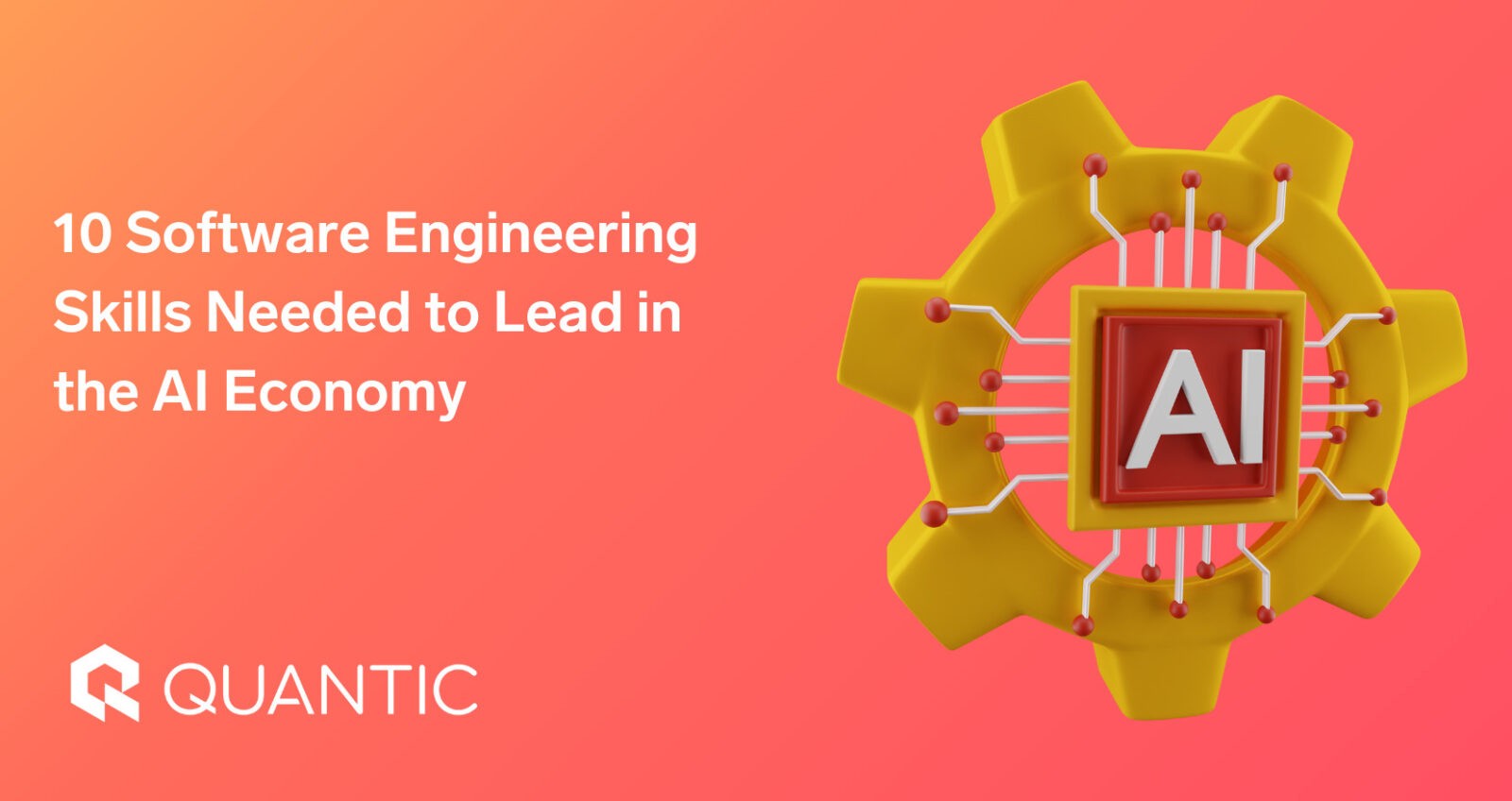CAREER PLANNING
Do You Need a Talent Management System in 2021?
In the 21st century, quality talent is in high demand and short supply.
A cross-section of top talent has formed a seller’s market out of this, offering their services to the highest payer at inflated salaries while always looking out for other opportunities. The power has moved from employer to employee.
Loyalty and commitment are, therefore, rare gems.
So how should you, the leader, respond?
Well, talent management is considered a systematic methodology meant to attract, engage and retain valuable employees into an organization. This provides a complexity that is the domain of leadership, let alone HR.
Today’s we’ll spotlight what talent management is and its impact on company effectiveness in the wake of digital technology.
What Is a Talent Management System?
Talent Management System Definition
Before digging further, let’s understand the root word: talent. Talent refers to members of personnel and candidates who’ve applied to an organization’s open positions.
Therefore, a Talent Management Solution involves software that integrates the recruitment process, onboarding employees, performance management, employee continuous learning, succession planning, and compensation management.
What Does a Talent Management System Do?
Along the way, it tracks an employee’s life cycle, taking up data that is used for strategic company purposes.
One way would be to integrate the Talent Management System with an applicant tracking system to categorize and sift through job applications. This will help you know which applicants qualify and which ones to keep in a database for future postings.
You could also track employee progress by having departmental managers enter the appropriate rating data. A candidate selection process will favor some for a promotion while disciplining those who aren’t committed to their jobs.
Benefits of Talent Management Systems
Improved Business Performance
With top performers and specialists, a company can achieve any intended goal. The following best practices can be blended into a Talent Management System for top results.
- Rapid Talent Allocation: Successful organizations have learned to respond flexibly to new opportunities and challenges and reallocate talent as strategic prerogatives arise and fade away. This, of course, is done based on matching talent.
- Positive Employee Experience: HR may need to consider business priorities and link talent with strategy.
- Strategic HR Teams: Experienced HRs are transparent with employees about business objectives and strategy, ensuring maximum effectiveness.
Facilitates Data Sharing
A talent management system aligns processes, including recruitment and performance. This moves off manual, mainstream data stored in silos and facilitates sharing across the organization.
Improved Recruitment and Hiring
These include interview scheduling and tracking applicants. Hiring managers will therefore create time to focus on relationship building with candidates.
Retaining Top Talent
Staying on top of information such as worker performance, goal management, training, and skill set gives you the data needed to create an enabling environment around them.
Digital Talent Management in 2021
In 2021, HR teams are forced to adopt digital methodologies to attract, retain, and improve talent to compete.
A report released by McLean and Company reveals a few gaps that need attention if a company is to stay competitive.
The most significant gaps discovered in the report that may be handled in your organization are:
- Talent acquisition and recruiting. Includes the use of legacy systems that prioritize the attraction of many applications in lieu of giving candidates an excellent experience.
- Retaining and diversifying talent. When an employee doesn’t find an internal career path, they will jump off the wagon in favor of another company that provides growth opportunities. 47% of top talent are likely to leave a company if they don’t get the right opportunity.
- Improper visibility into the capability of employees. This happens when employees can’t easily penetrate the organization’s new internal opportunities,
- Workforce management strategies that don’t properly match business propositions. Despite investment into other areas, including a Learning Management System, a unified solution is needed to give the right opportunities to the right individual in time.
Google is our program partner that has re-invented its HR solution through “people analytics.”
All decisions rely on data and analytics, including operations to solve diversity problems, a scientific approach to recruiting, and a predicting modeling paradigm that uses analytics to enforce effective workforce planning.
The Evolution of Talent Management Technology
The new digital era comes with new demands on HR and talent teams and how they do business. The past 40 years have brought a large shift in talent management.
| Year | Key HR Question | Description |
| 1980 | How do I PAY my talent? | A personnel administration model which provided administrative services such as record keeping of personnel files. |
| 2000 | How do I RATE my talent? | Ushered in human resources management. Competency was key, with the use of the 9-block framework, onboarding technologies, classroom e-learning, and succession planning, etc. |
| 2010 | How do I UNDERSTAND my talent? | Evolution to Integrated Talent Management, a platform that incorporates skill set, data, and employee profiles.It was backed up with cloud technology, social media, and Big Data from HRIS and talent systems. HR better understands the needs of talent and sets up reactive employee retention mechanisms.Functions and systems operate in silos without any centralized connection. |
| 2020+ | How do I ANTICIPATE my talent? | Re-imagined to integrate talent and HR functions to foster continuous and personalized learning, produce better employee experience and predict performance success. |
Creating a Talent Management System
A well-planned talent management suite comes with step-wise strategies to fully scope attraction, onboarding, development, engagement, and retention of high-quality talent.
The following questions suffice:
#1: What Are Your Priorities?
List company organizational goals, which are often set by the board of directors on a business scorecard as company-wide KPIs.
Identify strategic priorities, which will target focus areas for the HR team. The focus of key questions such as “do we want to deepen relationships with existing clients, or are we on a mission to expand our customer base?” Be as specific as possible.
Answering these questions will help you know which type of employees to attract and develop in your existing team.
#2: How Do We Match Talent Management Processes to Strategic Priorities?
For example, you want to deepen customer relationships. How does HR connect towards this end? And can HR contribute to transforming consultants into long-term partners?
Consider an oil company operating in the present worldwide drive to “go green.” They would work at employing people to work on projects to reduce carbon pollution.
This second step connects priorities to tangible HR management practices.
#3: What HR Processes Are Required to Implement and Maintain Capabilities?
Finally, you need to make the necessary moves to realize your strategy. You may need 3–5 years to realize a strategy fully.
How Is Talent Management Measured?
People are the biggest expense an organization incurs, so it’s prudent to devise ways to eliminate waste and make processes efficient, with the end goal of meeting organizational goals.
A cross-section of metrics can be selected to define problem areas and help collect relevant data. The following KPIs and metrics can be considered:
- Mobility: Internal recruiting programs reduce outward mobility. Employees easily see paths for career growth.
You can use a career path ratio to calculate lateral transfers.
Career Path Ratio (CPR) = Total no. of promotions / (total transfers + total promotions)
Values above 0.2 indicate high lateral transfers, while values above 0.7 reveal high vertical promotions.
- Turnover: tracking talents who leave the company provides clues about the various weaknesses in the talent management process.
Turnover Rate = (no. of Separations / Average no. of Employees) * 100
Turnover can be divided into voluntary turnover (those who leave the company at will) and involuntary turnover (those who were asked to quit). You can also track high-performer turnover (loss of top employees).
- Retention: Focuses on the employees that the company desires to retain in relation to those terminated.
Retention rate = no. of employees / total no. of employees
You can further calculate retention rate by manager, department, or office location (including your VA). Blips may indicate that deeper conversation is needed between managers and employees to provide feedback and engagement.
- Satisfaction: This can be measured via direct conversations and surveys. Anonymous assessment will provide a better evaluation of satisfaction.
One popular way in which measurement is made is via employees’ Net Promoter Scores (eNPS).
An eNPS may ask, “on a scale of 0 to 10, would you recommend this company to someone else as a favorable place to work?”
As a result, promoters will give a 9 to 10; detractors may indicate 0 to 6.
Anything else is termed as “passives.”
eNPS = percentage of promoters – percentage of detractors
- Performance: Many ways can be used with this metric, including:
- Work quality: How well do employees measure up to objectives set by management? For a finance company, accounting errors can be considered.
- New-hire rate failure: This is the number of employees (percentage) who leave the company within a time frame, typically a year.
Indicates whether the hiring team is picking the right people for open positions.
- Quality for hire (QoH): using a combination of retention rate and appraisal scores to determine the extent to which new hires contribute to a company’s long-term success.
For example, a supervisor can objectively measure an employee’s performance by considering objective data like sales.
- Distribution: Distribution, equity, and inclusion (DE&I) calculations determine the nature of your talent’s demographic distribution, considering factors such as age, gender, and so on.
DE&I programs should extend beyond gender to look into factors such as race, religion, ethnicity, and disability to help organizations leverage those qualities to support organizational objectives.
You could go further into adding diversity retention calculations. For example, are women and employees of color opting out more than others? These diversity metrics can also be extended to managers and location (VA inclusive), all in view of advancement.
- Training Spend: According to LinkedIn’s 2021 Workplace Learning Report, upwards of 30% of L&D professionals confessed to increasing their training budgets. This is an effort meant to keep pace or deal with turnover as a result of discouragement.
Technology will help companies create courses around safety and compliance and equip employees for new roles.
Take some time to benchmark your spending against peers. A good data source could be the Training Industry Report, which breaks down spending per industry sector.
- Cost to Hire: Measures the cost-effectiveness of your recruiting. You want to aim at using the shortest time to hire the best talent while keeping expenses low.
Cost per hire = External and internal hiring costs / number of hires
External costs include job boards and premium job postings, advertising fees, agency fees, and other costs to reach potentials. Internal costs include salaries and benefits of the recruiting team, alongside fixed costs, e.g., talent acquisition system.
- Time to Hire: Refers to the entire hiring process, from requisition (when successful candidates entered the talent pipeline) to acceptance (when the candidate accepted the employment offer).
Similarly, time to fill refers to the period between requisition and hire.
Both metrics define recruiter goals, set hiring expectations, and tease out areas for improvement.
Tracking time for hire helps draw out bottlenecks that can be fixed. Otherwise, the HR team risks losing good candidates and having to start again. A lengthy hiring process has been shown to reduce employee productivity.
- Time to Full Productivity: Every new hire needs some time to become productive. During this time, they learn the ropes, familiarize themselves with colleagues, and develop a high-quality network geared at efficiency.
Onboarding and inboarding activities can therefore be crafted to shorten this period. For instance, measuring productivity in terms of the ability to work effectively independently.
- Exit Interviews (EI): Top EI goals will be to determine why your talent is leaving, the channels they use to find new jobs, whether they know where they are going, determine if a competitor is poaching on you, and spot poor managers.
You may also want to know if a gap in training and advancement is making them think elsewhere.
You can work with standardized interviews or questionnaires. Metrics gathered, as a result, should provide reliable data. Best practices include:
- Using a standardized survey, and follow up with a phone interview. Then zero in on the key factors to obtain key information.
- Use an external contractor to perform exit surveys. Exiting employees may be more comfortable around a consultant.
- Let the interviewee know that the results of the survey are confidential.
- Document interview findings immediately
Talent Management Products and Solutions
Talent Management Models
The element of talent management can be divided into 5 major categories and can also be referred to as the AARRR model (Acquisition, Activation, Revenue, Referral, and Retention).
Acquisition: Employer branding aimed at driving potential to your organization.
You may ask yourself:
- How will people know about you out there?
- How can you be so appealing that people will want to apply and work with you?
Activation: Involves candidate experience, selection, and talent onboarding.
Questions:
- How do you avoid bad hires?
- Having built a talent pool, how will you select the right people?
- How do you turn your candidates into brand advocates?
- Can you reject candidates and still keep in touch with them for other openings?
- How do you onboard in such a way that will increase productivity?
Revenue: Aims at getting the most out of talent. You will need to know how to manage onboarding, learning, and performance. Ask yourself:
- How do you onboard faster?
- How do you increase Time to Full Productivity?
- How do you ensure long-term productivity?
- How do you keep your workforce engaged?
Referral: Implies reputation building, both by attracting new employees or leveraging existing employees to onboard others. Employees who are referred have been shown to onboard faster, work better and stay longer.
Questions:
- How do we create a winning employee referral program?
- How can we engage our employees in championing our brand?
- Can we leverage our employees to expand our customer base?
Retention: Here, you seek to make your organization as comfortable as possible for your talents. Topics to consider include happiness, benefits, and compensation management.
Questions:
- How will you lower your voluntary turnover rate?
- Which financial and non-financial incentives can you put in place to ensure your employees are happy?
- What variable pay metrics can you adopt to make sure your employees perform highly?
Talent Management Software
A Talent Management Software is geared at the automation of all tasks in the talent management process: recruiting, development and training, performance management, and overseeing compensation.
Top Talent Management Software
Consider the following talent management solutions.
Lanteria HR is an all-incorporating HR suite built on top of SharePoint and Office 365. Its features include Core HR, time and attendance, recruitment process, performance management, learning management, employee self-service portal, and a report center.
Workday HCM is a cloud-based solution that weaves human resources management functionality. It incorporates management of finances, document management, enterprise planning, spending, and talent.
SAP SuccessFactors is an HR Software-as-a-Service(SaaS) that manages recruitment, business alignment, people performance, and learning management systems for organizations of all sizes.
ADP Workforce Now offers a comprehensive HR suite to manage HR, payroll, FAQ, talent, and benefits.
Free Talent Management Software
Bitrix24 HR is the most popular free Talent Management System—a free, web-based HR option with HR instruments such as an employee directory, leave requests, and absence calendars. It has a self-hosted option for premise deployment that comes at an additional fee.
Ice HRM is another free TMS/HCM option with both an open-source and a cloud-based option free for the first 5 users. It comes with a modular nature that opens it up to customization and extendability.
What Is Talent Management in HRM?
In HRM, the talent management process incorporates attraction, motivation, development, and retaining of top-performing employees/talent. Three important components come into play:
- HR Processes as a complete set: Consists of a synergy of talent management activities to achieve full potential
- Attract, motivate, retain, develop: Key HR areas, ranging from employee onboarding to retention, with everything in between
- Top-performing employees: Envisions increased performance by creating highly motivated individuals through a set of competitive talent management practices
Talent Management System Examples
Google incorporates a people operations cornerstone that is aimed at:
- Sourcing and taking up only the best fit candidate from the worldwide pool
- Framing a meritocratic environment that scans for top performances and rewards accordingly
- Maximizing employee potential through programs such as on-the-job coaching, intense training (peer-to-peer and external), and 360-degree feedback
- Calibration and output: this includes measures to remove performance review bias, ensure fair ratings, and determine a talent’s upward trend
Other Talent Management Tools and Tactics
A quality talent management system will help you seamlessly meet your organization’s needs, both present and future.
You want to avoid paying for features that aren’t of interest. Also, consider finding a suitable vendor who’s committed to supporting your vision and aligns with your budget. While at it, ask for a proper demo, which captures implementation, training, and costs.
A solid Talent Management System will reward you with satisfied, high-performing talent. You will find it easy to collect and analyze data to stay on top of employee management matters.
Consider Quantic School of Business and Technology as your employee training partner. We offer tuition reimbursement to help you manage employee training affordably.



